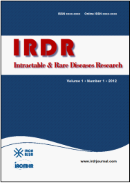Drug Discov Ther. 2016;10(3):156-162. (DOI: 10.5582/ddt.2016.01034)
Preparation of an oral acetaminophen film that is expected to improve medication administration: Effect of polyvinylpyrrolidone on physical properties of the film.
Ito I, Ito A, Unezaki S
This study investigated the effect of polyvinylpyrrolidone (PVP) on a film containing carboxymethyl cellulose sodium (CMC) as a matrix to improve surface roughness caused by drug recrystallization. Acetaminophen (AA) was used as the model drug. Recrystallization is a problem encountered during the preparation of films that contain high drug doses, making them difficult to take. A film that does not disintegrate for clinical applications requires a smooth surface, moderate strength and elasticity, and a low level of adhesiveness to facilitate taking of the medication. Addition of PVP to the film formulation made the surface significantly smoother, and it was independent of the compounding method. Smooth films were obtained when the CMC concentration was kept constant and the amount of PVP was increased, but it also increased the adhesiveness and strength, and decreased the elasticity of the films. When high polymer concentration was kept constant and the ratio of CMC and PVP was varied, the films with smaller amounts of PVP tended to have a smoother surface and less adhesiveness. However, when the amount of PVP was reduced, the film strength increased and elasticity decreased. The amount of PVP had a negligible effect on drug dissolution behavior, making it useful for preparation of the AA film. However, it is necessary to determine the compounding method and the PVP load considering the adhesiveness, strength, and elasticity of the films.







